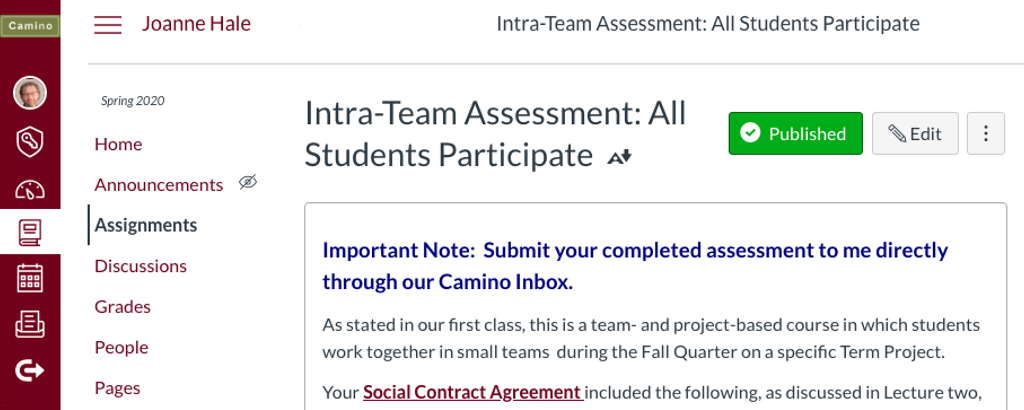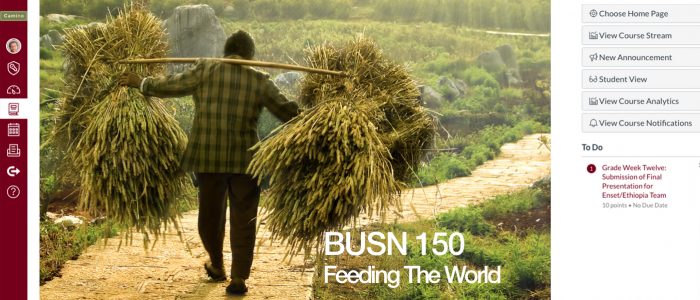IntoActions works with Santa Clara University to strengthen its online learning capacity
Like every education institution, Santa Clara University (SCU), based in the heart of Silicon Valley, was forced to move all of its face-to-face courses online in March of this year due to COVID-19. This happened literally overnight! To handle this dramatic transition, SCU reached out to IntoActions to help its faculty prepare high-quality online classes for the summer and fall quarters. At the same time, the University sought to strengthen its overall innovation capacity in teaching and online learning.
Moving from Emergency Remote Instruction to Enhanced Online Learning
The first phase of the four-month course redesign project focused on emergency remote instruction. In this phase, IntoActions worked with the Academic Technology Team to provide faculty with direct technical support in using the Zoom video conferencing platform and the Canvas learning management system. This support enabled faculty to complete the winter quarter and prepare to offer their spring quarter courses online.
The second and more intensive phase engaged SCU faculty with comprehensive pedagogical and technical mentoring and support for redesigning their classes to be offered online during the summer and fall quarters.
During this pedagogical design phase, IntoActions worked with over 30 faculty members from all SCU schools and colleges. Courses that faculty redesigned ranged from introduction to religion to digital photography, to a project-based course in which students work in teams to solve real-world problem scenarios such as addressing glaring hunger and poverty in the developing world while protecting the environment.

BUSN 150: Feeding the World is a team- and project-based 5-unit online course. Teams apply both intra-team and inter-team assessments
Central to this design phase was a capacity-building program that modeled best practices from project-based learning. This was divided into two parts: three weeks of online class sessions working in a faculty learning community, and three weeks of design and production time. Each faculty member worked independently on their course with active 1:1 mentoring from myself and other SCU curriculum redesign team members.
Applying the Backward Design Model for Creating Rich, Effective Learning Experiences
My first experience in designing online courses came over 20 years ago at Apple Computer and Stanford University. Educational technology has generally improved since then, and learning platforms and video conferencing systems (such as Canvas and Zoom) now make it easier to connect and engage students online. Yet, one thing that has not changed: the best way to design effective learning experiences.
The learning design approach that SCU faculty used to redesign their courses was the Backward Design Model developed by Wiggins and McTighe [1]. This model suggests a planning sequence in three stages:
- Stage 1: Identify the desired learning objectives. What should students know, understand, and be able to do?
- Stage 2: Determine acceptable evidence. How will we know if students have achieved the desired results? What will we accept as evidence for improved student understanding, competencies, and proficiency?
- Stage 3: Identify and plan learning experiences and activities. What are the most effective teaching methods and learning activities? What is the optimal learning sequence? What pedagogical resources are necessary?
SCU’s online class sessions were offered through the Canvas Learning Management System, the same platform the University uses for its courses. As faculty progressed through the online sessions and 1:1 mentoring, they were able to redefine and clarify course learning objectives, identify the best assessment methods, build new assessment rubrics directly into Canvas, and start experimenting with additional learning activities.
The Power of Project-Based Learning and 1:1 Mentoring
At IntoActions, the innovation and learning design firm I founded in San Francisco in 2014, we work with organizations to strengthen their strategic innovation capacity. All of our programs utilize activities that are human-centric, hands-on, highly collaborative, and project-based.
During this course redesign project, SCU faculty applied best-practice learning experience design principles to the courses they were preparing for summer and fall quarters. They simultaneously explored how available technologies could best be used to support their learning objectives. This is project-based learning at its best.
The importance of one-on-one (1:1) work with faculty over an extended period underscored the power of personal coaching and mentoring. In a post-project survey, participants ranked the 1:1 mentoring as the #1 benefit to their course redesign efforts. (This effect was also shown in a seminal paper by Bloom [2]). As one participant wrote:
To find out how IntoActions might help your school or organization—whether you’re adapting to increased online learning, enhancing faculty capacity for learning design, or building a more innovative organizational culture—please contact us.
[1] Wiggins, Grant and Jay McTighe. “What is Backward Design?” in Understanding by Design. 1st edition, Upper Saddle River, NJ: Merrill Prentice Hall, 2001, pp. 7-19
[2] Bloom, Benjamin S. “The 2 Sigma Problem: The Search for Methods of Group Instruction as Effective as One-to-One Tutoring.” Educational Researcher 13, no. 6 (1984): 4-16. Accessed August 27, 2020. http://www.jstor.org/stable/1175554.
Photos may be subject to copyright.



